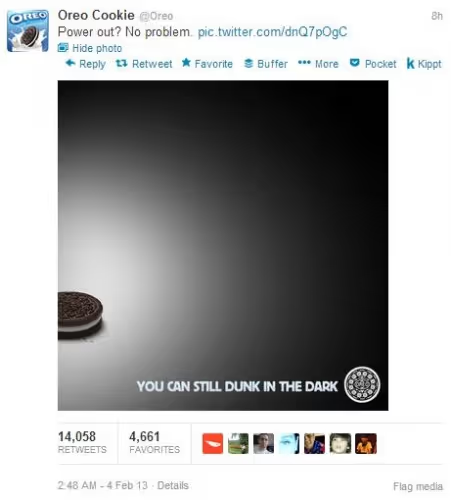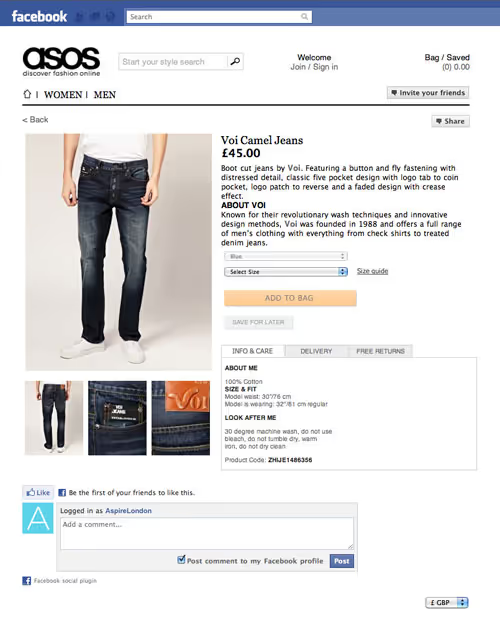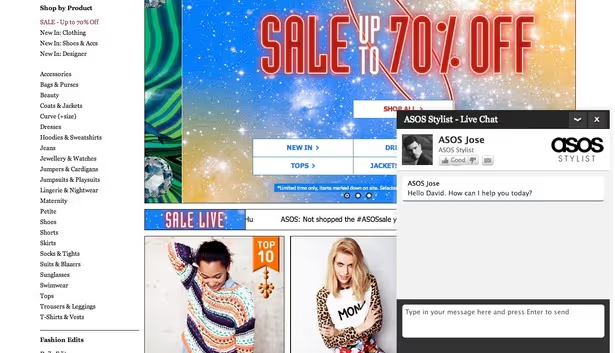What is a Multichannel Marketing Strategy?
Everything you need to know about creating winning multichannel marketing campaigns
Multichannel marketing
Were James Bond in your shoes, he would be in multichannel marketing. With all those gadgets and gizmos specially designed for each mission, the comm-link watch, the cars tucked away at mission sites - he was ready for anything!
The daring English hero came prepared for a mission with a slew of tactics. If something didn’t work, he’d use a different method. And he’d go anywhere the bad guys went. James Bond in space? Check: 1979’s Moonraker. James Bond at sea? See 1967’s You Only Live Twice.
A multi channel marketing strategy works in the same way. For marketers a multi channel approach means always being where the customers are. It means using a variety of channels to communicate with their audience. These days, channels are multiplying while consumer preferences and spending habits are continuing to move online. To reach your target audience, you must be adaptive to their channel of choice.
Today, we’ll unpack the benefits of multichannel marketing for your company. Using examples of leading multichannel retail brands, we’ll explore how to establish an effective set of multi channel campaigns to drive awareness, conversions, and sales. By the end, you’ll be equipped with the know-how and techniques necessary to engage your best customers across any platform, 007-style.
Grab the tuxedo!

What is Multichannel Marketing: Multichannel Marketing is when you interact with potential, and existing, customers across various devices, mediums and networks (i.e. Channels).
Be where your customers are
You must be where your customers are. If there is an emerging channel your customers are using it, be there. If there is an established channel your customers are using, be there. Don't let new channels or multiple channels stop you.
Multi channel marketing hinges upon consumer choice. Businesses that prioritize the customer experience by making it easy for consumers to purchase from them on their preferred channels or across multiple channels win.
According to Misia Tramp, EVP of Insights at Tahzoo, a multichannel approach means “understanding how to eliminate effort from the customer experience.”
This necessitates a seamless set of touch points to move users down the funnel. To build a mutually rewarding brand experience that caters to consumer wants, marketers must orchestrate integrated campaigns across both digital and physical channels.
Truthfully, this is much easier said than done today.
Over 90% of marketers struggle to seamlessly connect more than three channels throughout the buyer journey. -- Gartner
Effective multichannel marketing takes advantage of the unique strengths and weakness of each different channel. Understanding a channel and engaging with customer at the right moment is key to building profitable and lasting customer relationships.
There are three fundamental to multichannel marketing:
- Marketers must understand their audience: Marketers can’t expect consumers to change their behavior. We must instead be attentive to consumer preferences and be willing and able to act across all channels to reach users in the right time and place.
- Targeted messaging at key moments: Abundant choices today mean messages must be hyper-relevant to cut through the noise. Channel orchestration and campaign management should deliver the right message at the right time in a way that’s authentic and trustworthy.
- Automation of campaigns: Automation solutions enable marketers to choreograph campaigns while collecting customer data. With a centralized data hub, it’ easy to send triggered messages and follow-up responses. Response attribution is pivotal to creating data-driven strategies that deliver conversions and sales, since all channels are not created equal.
Why implement a multichannel marketing strategy?

- 74% of businesses increased sales with a multichannel strategy -- 64% increased consumer loyalty/acquisition -- 57% reported better customer experience. -- SAP
- 72% of customers prefer an integrated marketing approach. -- Gartner
- 40% of consumers say it’s very important to be able to purchase from a retailer via different channels. -- Econsultancy
With more moving parts to manage, multichannel marketing can seem an overwhelming. However, as the numbers show, multichannel marketing is rewarding for your business.
Some immediate benefits you can expect from a strong multichannel marketing strategy are:
Increased brand awareness: When you’re interacting across multiple platforms, your users recognize you easier and your brand gains more attention.
Improved conversions: Being available via a customer's chosen channel directly aligns your brand with higher levels of engagement and conversions.
Higher revenues: More opportunities to purchase across channels means customers will purchase more readily, translating into additional transactions, more up-selling and more cross-selling.
Better customer knowledge: Every channel and touch point provides customer insights. Track how users interact across all your channels and you can learn more about their preferences to further personalizes the experience.
Expanded content reach: If you invest in quality content but not a proper distribution you aren't maximizing your return. Spreading your content beyond your website with multiple channels such as email, social, affiliates, etc. will help increase your authority in the space.
Elevated brand consistency: A multi channel strategy requires your brand messaging to be consistent across all channels. This exercise will likely cause you to review and improve your existing brand consistency.
Real Life Multichannel Marketing Examples
Let’s take a look at brands leading the way to truly coordinated multi channel strategies.
#1 Oreo

(Source)
For 34 minutes, Super Bowl XLVII had no power. Most advertisers were losing money from those expensive TV ad buys. But not Oreo: the Tweet “Power out? No problem” exploded across social media with almost 15,000 retweets, netted the brand 20,000 Facebook likes, and segued perfectly into Oreo’s ongoing campaign which spoofed dark-dwelling monsters.
Social media platforms and TV work well together. Television hashtags are used in shows such as The Voice, American Idol, etc. to drive engagement online during the show.
Users routinely watch TV while using a secondary device with social media: 46% of mobile users use their device while watching TV every day and 33% of viewers Tweet about TV. Nielsen also found that 74% of consumers experienced elevated brand recognition when shown messaging simultaneously across more than one channel.
Despite the huge boost in brand awareness across more than one medium, increasing touch points, and developing brand consistency - Jonah Berger, Professor of Marketing at Wharton said,
“It’s not as popular as it should be.”
#2 Apple

(Source)
Remember the oversize iPhone 6 billboard campaigns?
They transported viewers into another world. The larger than life brand personality that began with Steve Jobs now seeps into every channel. And yet, a massive outdoor advert like this seems just an add-on to the real marketing strategy. Everything the software titan does is big, the next greatest innovation, charming by design - and via every channel.
This consistency works. Apple’s earned itself an 87% loyalty rate with users and is currently the most valuable brand in the world. Why? Apple makes life fun and easy for consumers.
“They are all successful in making themselves relevant to people’s lives, providing a point of difference in a sea of sameness and amplifying what they stand for in a meaningful, clear and consistent way.” -- Ann Green, Millward Brown
An Apple store is itself an interactive channel that previews available products for potential and existing customers. Online shoppers come to the brick and mortar to experience the products in person, enjoying a well-lit retail space that’s full of friendly support, mirroring the online support experience. The rounded, space-age aesthetic makes there way from the products, to the store, to the digital interface as well.
Such a recognizable visual appeal of product and store ties in with the software experience to create a nonstop rewarding array of touch points.

Above is Apple’s in-app marketing channel for Apple Music. Easily navigated software makes sure users develop a brand relationship that never misses a beat. Within iTunes, the iTunes Store is only one click away, as is a recently embedded Apple Music with a cute “For You” icon.
Software updates allow the brand to configure user experiences to promote new features and drive more engagement as needed. Apple has created the seamless customer journey by not only integrating its sales processes into the software, but by uniting the physical product and brick and mortar.
#3 ASOS

(Source)
Online retailer ASOS was hip to the social media revolution and adapted with a variety of touch points for it’s younger shoppers. First, it released it’s Facebook integrated shopping app to boost ecommerce amongst the Facebook community. Rather than depart the social site, the 11 million unique visitors per month get to access their brand on the channel of there choice with a first class experience.
ASOS is also active on Instagram with 2.5 million followers. Sharing a wide range of lifestyle photos helps improve brand consistency while new products are unveiled to expand the shopping experience. Being available to users via social, a specialty app, the website (which has monthly sales over 1 million dollars) makes the brand accessible wherever users go and promotes easy shopping.
Multi-Channel B2C Campaigns Realize a 24% Greater Return on Investment -- SailThru

(Source)
ASOS further distances itself from competitors with a live chat function on the website. This curbs any consumer complaints and smoothes out any frustrations, but also promotes sales. After all, trusty ASOS Jose is there to assist with sizing questions, recommend styles, and generally guide the buying experience, just like an in-store assistant.
This brilliant additional touch point generates goodwill while increasing both customer retention and real-time sales revenue.
The Mission is Multi Channel Marketing
Today, the touch points available to marketers are growing rapidly. For those with a multi channel marketing strategy in place, these are all opportunities to leverage - not reason for concern.
By coordinating campaigns to span multiple channels, marketers can encourage customers to make more purchases, collect more consumer data and expand their brand awareness on and offline.